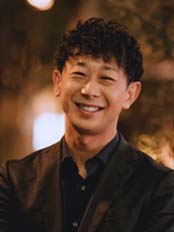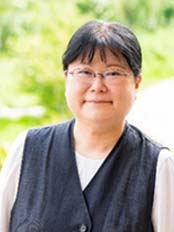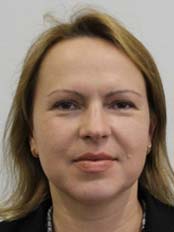Keynote Speeches
Keynote Speech - 1
From Taste Sensing to Food Futures: Media Technologies for the 22nd Century

Professor Homei Miyashita
Meiji University
Abstract:
Recent advances in technologies now allow not only the measurement but also the reproduction of taste sensations. Building on this, the emerging fields of taste media, olfactory media, and nutritional media go beyond traditional food engineering: enabling flavors to be shared remotely, scents to be replayed in immersive dining, and nutrition to be digitally tailored to individual needs.
Looking ahead, these technologies make it possible to re-create rare flavors, design foods that overcome allergies, and generate meals optimized for health and pleasure. With the aid of generative AI, flavor creation becomes a collaboration between human imagination and machine creativity, opening new possibilities far beyond conventional food production.
This keynote will explore not only the frontiers of sensing and reproduction, but also the visions of food in the 22nd century-a future in which eating becomes customizable, shareable, and playful. I will share these ideas through an engaging talk enriched with videos and demonstrations, inviting the audience to experience the joy and imagination behind the science of food.
Biography:
Homei Miyashita, Ph.D. is a Professor, Department Chair of Frontier Media Science, School of Interdisciplinary Mathematical Sciences, Meiji University. In 2020, his project “Taste the TV (TTTV),” which embodies the concepts of “taste media,” “tele-taste,” and “tele-eat” that he had been promoting, was selected for the INNO-vation program of the Ministry of Internal Affairs and Communications. In collaboration with NTT DOCOMO and H2L, he developed the “FEEL TECH” taste sharing technology integrated with the human augmentation platform. In collaboration with Kirin Holdings, he developed the “Electric Salt” spoon, which use electricity to enhance the saltiness of low-salt foods. This product is now available for purchase. The “Electric Salt” products also won two awards at the 2025 CES Innovation Awards® in the Digital Health and Accessibility & AgeTech categories. In 2025, he began a new collaboration with the Asahi Group Japan, combining their expertise in flavor design and materials with his lab’s research on taste media. This project resulted in technologies that reproduce flavor and texture for personalized nutrition, as well as aroma-blending systems that create diverse beverage experiences. These efforts aim to overcome dietary constraints, provide optimized eating experiences, and pioneer a world where health, pleasure, and diverse tastes can coexist. In 2023, he received the Ig Nobel Prize (Nutrition).
Keynote Speech - 2
Emergent Functions of Electrically Induced Bubbles in Micro/Nano-Scale Fluid Engineering for Biomedical Applications

Professor Yoko Yamanishi
Kyushu University
Abstract:
Cell poration technologies provide powerful tools not only for exploring the behavior of biological molecules but also for advancing genetic manipulation. However, delivering large molecules that carry extensive genomic information remains a significant challenge. In this presentation, I introduce a novel electromechanical poration technique utilizing a core–shell microbubble generator. This device features a fine microelectrode encased in a dielectric material, with a microcavity at its tip that concentrates the electric field upon pulse application. This configuration enables the generation of microbubbles that stimulate cells electromechanically.
Remarkably, this method allows for the transfection of extremely large molecules-on the order of thousands of kilodaltons—into cell types traditionally considered difficult to manipulate, such as osteoblasts and Chlamydomonas. Furthermore, we discovered that adjusting the viscosity of the cell suspension significantly improves transfection efficiency, likely due to cytoskeletal remodeling at the membrane level.
The versatility of this approach across diverse cell types opens exciting possibilities for emerging applications in gene engineering. I will discuss the underlying mechanism of electrically induced bubble formation and highlight its broad potential in electromechanical poration.
Biography:
Professor Yoko Yamanishi earned her Ph.D. from Imperial College London in 2003. She has held academic positions at Tohoku University, Nagoya University, and Shibaura Institute of Technology, focusing on BioMEMS, microbubble injectors, and biomedical fluid engineering. Since 2016, she has been a Professor (Distinguished Prof. since 2024) at Kyushu University, leading research on bubble-based gene delivery. She currently serves as Principal Investigator for CREST JST and Program Manager for the Moonshot R&D initiative.
Keynote Speech - 3
Intelligent Sensors for Measuring Mechanisms and Effects of Art Therapy

Professor Olga Korostynska
Oslo Metropolitan University
Abstract:
Art therapy is a psychosocial health intervention that promotes emotional and physical well-being. It is used to manage various disorders, including somatic or psychosomatic pain and could offer cost-effective pain management without the side effects that medications often have. Integrating art therapy into public healthcare services can decrease the financial burden on the system and make it more sustainable.
But how does it work? Is it for everyone? How can mechanisms and effects of art therapy be objectively measured? This talk will focus on intelligent sensors that can be used to answer these questions. This will help to understand the extent to which non-pharmacological interventions, such as art therapy, can alleviate pain. Ultimately, the findings may provide valuable justification for the long-term use of such interventions in pain regulation and their correlation with physiological and neural responses.
Biography:
Olga Korostynska is a Professor in Biomedical Engineering at Oslo Metropolitan University (OsloMet), Oslo, Norway. She has a B.Eng and M.Sc in Biomedical Engineering from the National Technical University of Ukraine (KPI), PhD in Electronics and Computer Engineering and LLB from the University of Limerick, Ireland. She was doing research on sensors and lecturing in six universities and four countries: Norway (OsloMet and NMBU), England (LJMU), Ireland (DIT and UL) and Ukraine (NTUU). She has been part of various research projects funded by EU FP7 and Horizon, MSCA, IRCSET, Enterprise Ireland, Cancer Research UK, Daiwa foundation and Norwegian Research Council. Her research interests include sensors for biomedical applications, smart tools and electromagnetic wave sensors, including for real-time water quality monitoring. Prof. Korostynska has co-authored 2 books, 15 book chapters, 5 patents and over 300 scientific papers in peer-reviewed journals and conference proceedings.